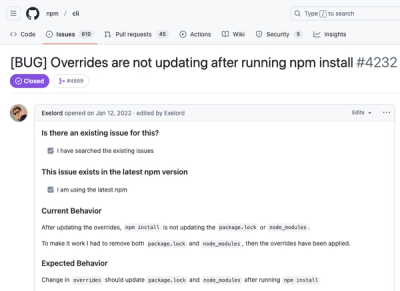




@rollup/stream
🍣 Stream Rollup build results
This package exists to provide a streaming interface for Rollup builds. This is useful in situations where a build system is working with vinyl files, such as gulp.js.
Requirements
This plugin requires an LTS Node version (v8.0.0+) and Rollup v1.20.0+.
Install
Using npm:
npm install @rollup/stream --save-dev
Usage
Assume a src/index.js file exists and contains code like the following:
export default 'jingle bells, batman smells';
We can bundle src/index.js using streams such like:
import rollupStream from '@rollup/stream';
const { log } = console;
const options = {
input: 'src/index.js',
output: { format: 'cjs' },
};
const stream = rollupStream(options);
let bundle = '';
stream.on('data', (data) => (bundle += data));
stream.on('end', () => log(bundle));
The preceding code will concatenate each chunk (or asset) and output the entire bundle's content when Rollup has completed bundling and the stream has ended.
Options
All Rollup options are valid to pass as options to @rollup/stream.
Usage with Gulp
Using Gulp requires piping. Suppose one wanted to take the bundle content and run it through a minifier, such as terser:
import rollupStream from '@rollup/stream';
import gulp from 'gulp';
import terser from 'gulp-terser';
import source from 'vinyl-source-stream';
gulp.task('rollup', () => {
const options = { input: 'src/index.js' };
return rollupStream(options)
.pipe(source('bundle.js'))
.pipe(terser({ keep_fnames: true, mangle: false }))
.pipe(gulp.dest('dist'));
});
Using Sourcemaps
Rollup can produce source maps by specifying the sourcemap output option. For example; to use the generated sourcemaps with Gulp and @rollup/stream:
import rollupStream from '@rollup/stream';
import buffer from 'vinyl-buffer';
import gulp from 'gulp';
import sourcemaps from 'gulp-sourcemaps';
import source from 'vinyl-source-stream';
gulp.task('rollup', () => {
const options = { input: 'src/index.js', output: { sourcemap: true } };
return rollupStream(options)
.pipe(source('bundle.js'))
.pipe(buffer())
.pipe(sourcemaps.init({ loadMaps: true }))
.pipe(sourcemaps.write('dist'))
.pipe(gulp.dest('dist'));
});
Caching
The ability to cache a build is already built into Rollup, so users of @rollup/stream get that for free. Caching can be useful to reduce or optimize build times, and is often used when watching files that are part of a build. For example; to utilize caching with Gulp and @rollup/stream:
import rollupStream from '@rollup/stream';
import buffer from 'vinyl-buffer';
import gulp from 'gulp';
import source from 'vinyl-source-stream';
let cache;
gulp.task('rollup', () => {
return rollupStream({
input: 'src/index.js',
cache,
})
.on('bundle', (bundle) => {
cache = bundle;
})
.pipe(source('bundle.js'))
.pipe(buffer())
.pipe(gulp.dest('dist'));
});
gulp.task('watch', (done) => {
gulp.watch('./src/**/*.js', gulp.series('rollup'));
done();
});
(Example based on the rollup-stream README)
Meta
CONTRIBUTING
LICENSE (MIT)






